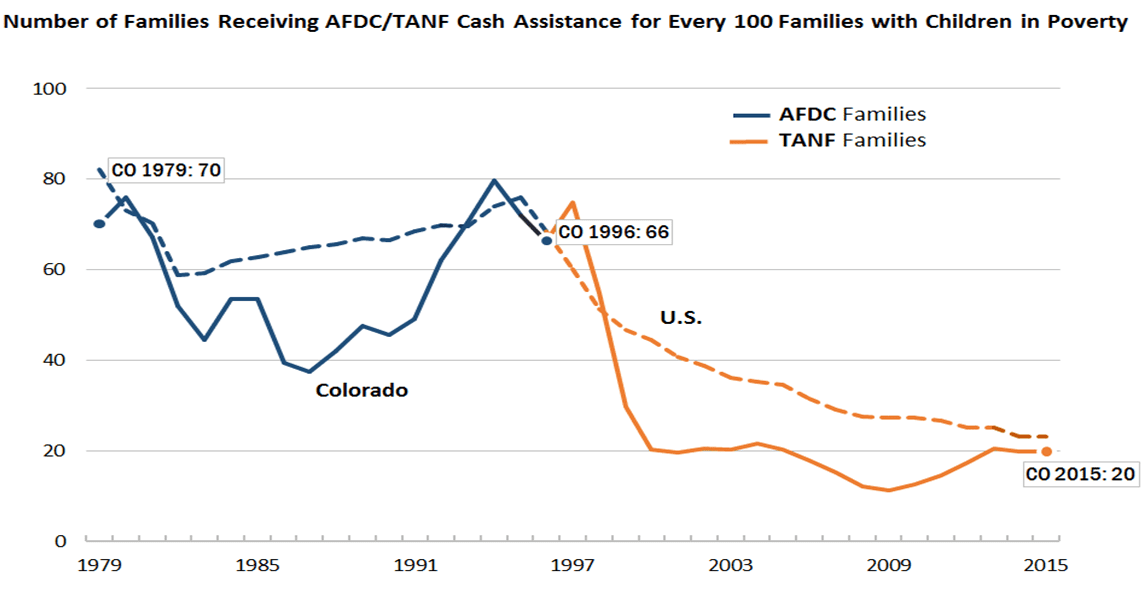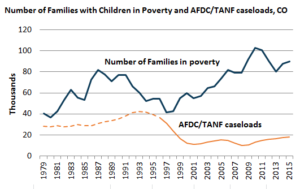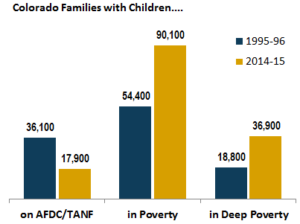A summary of the list of recommendations on the implementation of the OBBBA in Colorado regarding public benefits systems and work requirements.
Recent articles
CCLP testifies in support of Colorado’s AI Sunshine Act
Charles Brennan provided testimony in support of Senate Bill 25B-004, Increase Transparency for Algorithmic Systems, during the 2025 Special Session. CCLP is in support of SB25B-004.
Coloradans launch 2026 ballot push for graduated state income tax
New ballot measure proposals would cut taxes for 98 percent of Coloradans, raise revenue to address budget crisis.
CCLP statement on the executive order and Colorado’s endless budget catastrophe
Coloradans deserve better than the artificial budget crisis that led to today's crippling cuts by Governor Jared Polis.
TANF’s cautionary tale about block grants

Temporary Assistance for Needy Families, TANF, is the block-grant created by Congress in the 1996 welfare reform legislation. Designed “to end welfare as we know it,” TANF replaced Aid to Families with Dependent Children (AFDC) which had provided cash assistance to the nation’s neediest families since 1935. The TANF block grant amount has not changed since 1996 and states have considerable flexibility on spending those dollars.
As a result, TANF provides far less assistance to far fewer struggling families today than before the program was reconstituted as a block grant. Recent analysis by the Center for Budget and Policy Priorities examines this dramatic decline. As shown in the graph above, in Colorado, for every 100 families in poverty, less than 20 receive cash assistance from TANF—down from 66 families out of every 100 in 1996.
The precipitous post-1996 drop of needy families being helped by TANF illustrates the hazards of block granting important pieces of our nation’s social safety net. That cliff-like drop is not a function of fewer families needing assistance. Rather, TANF’s declining reach reflects its block grant structure — an allocation frozen in time — and state flexibility that has severely diluted the program’s historical focus on lifting families with children out of poverty.
Other critical parts of our safety net, like food (SNAP) and health care (Medicaid), are responsive to changes in our economy that result in more people needing assistance—even for short periods of time. As the need rises, as it did during the Great Recession, SNAP and Medicaid caseloads also increase to provide those critical supports to a larger population.
This is no longer the case with basic cash assistance provided by TANF. As seen in the graph below, as the number of families living in poverty in Colorado has increased over the past 15 years, TANF caseloads have remained mostly flat over that same period. Today, we have twice as many Colorado families living in deep poverty — families with incomes below $2 per person per day — than we did in 1996. TANF reaches only a fraction of those needy families and those who do receive TANF cash assistance receive too little to be lifted out of poverty. In fact, TANF benefits today fall short of lifting families out of poverty in every state.


Why is adequate cash assistance an important part of the social safety net? Because, fundamentally, having access to cash to meet our most basic needs is critical to our health and well-being. The amount of money we make is one of the primary drivers of health. Higher income is associated with better overall health and longer life expectancy. In Colorado, the highest earning men and women in the state live 6 to 10 years longer than those at the bottom of the income spectrum. A recent study concluded that poverty poses a greater societal health burden than any other risk factor.
And most tragically, research has shown that growing up poor can have life-long consequences by impairing brain function and mental health and limiting future earning potential. Recently, pediatricians have called for classifying childhood poverty as a disease and cited the importance of a robust social safety net in lifting children out of poverty.
It’s important to acknowledge that for most families, assistance provided by income and work support programs is temporary — needed only for a short time to overcome an unexpected job loss, a medical crisis, or some other significant life event.
But that assistance, even if it is short-lived, is critically important. A recent report issued by Brookings summarized the growing body of research on how cash transfers to low-income families with children yields long-term benefits such as improved health, well-being and earnings as adults. Given that, the authors suggest shifting our thinking about government programs that provide assistance to needy families. If government transfers improve outcomes for poor children so that they become productive tax-paying adults, these programs should be treated similarly to other important public investments that yield community-wide benefits, such as a road project or a government-funded scientific breakthrough.
The experience with TANF makes a strong case for the importance of protecting investments in our social safety net and how block granting those investments can threaten responsiveness to changing needs, dilute the purpose, and severely restrict the reach of these critical programs.
– Michelle Webster
